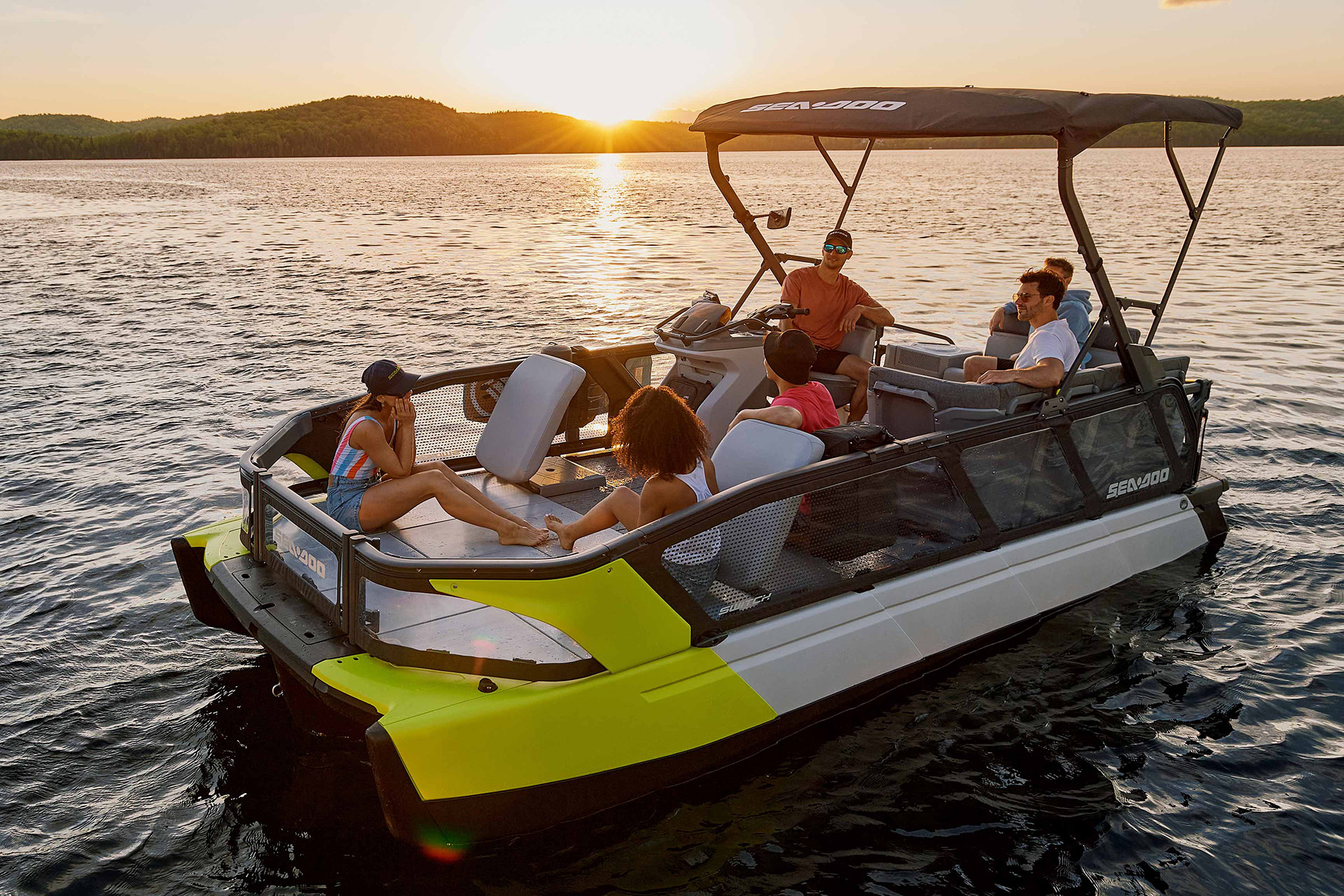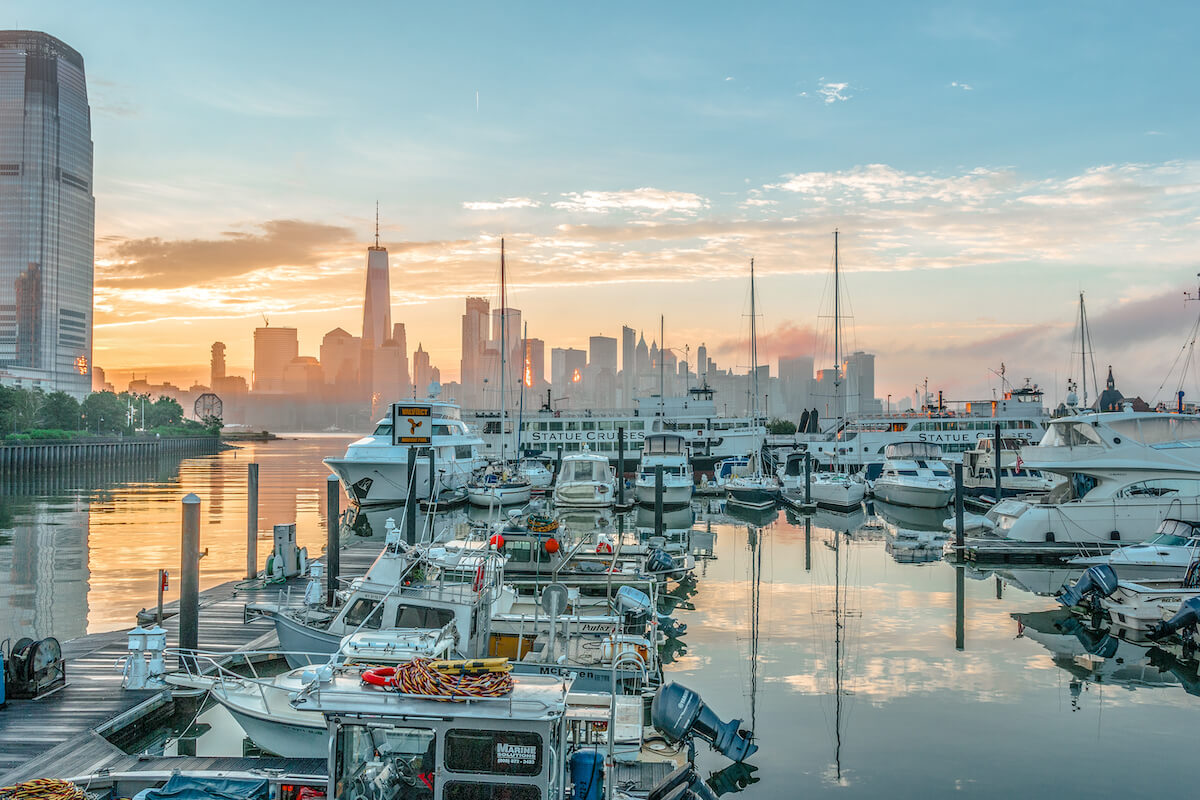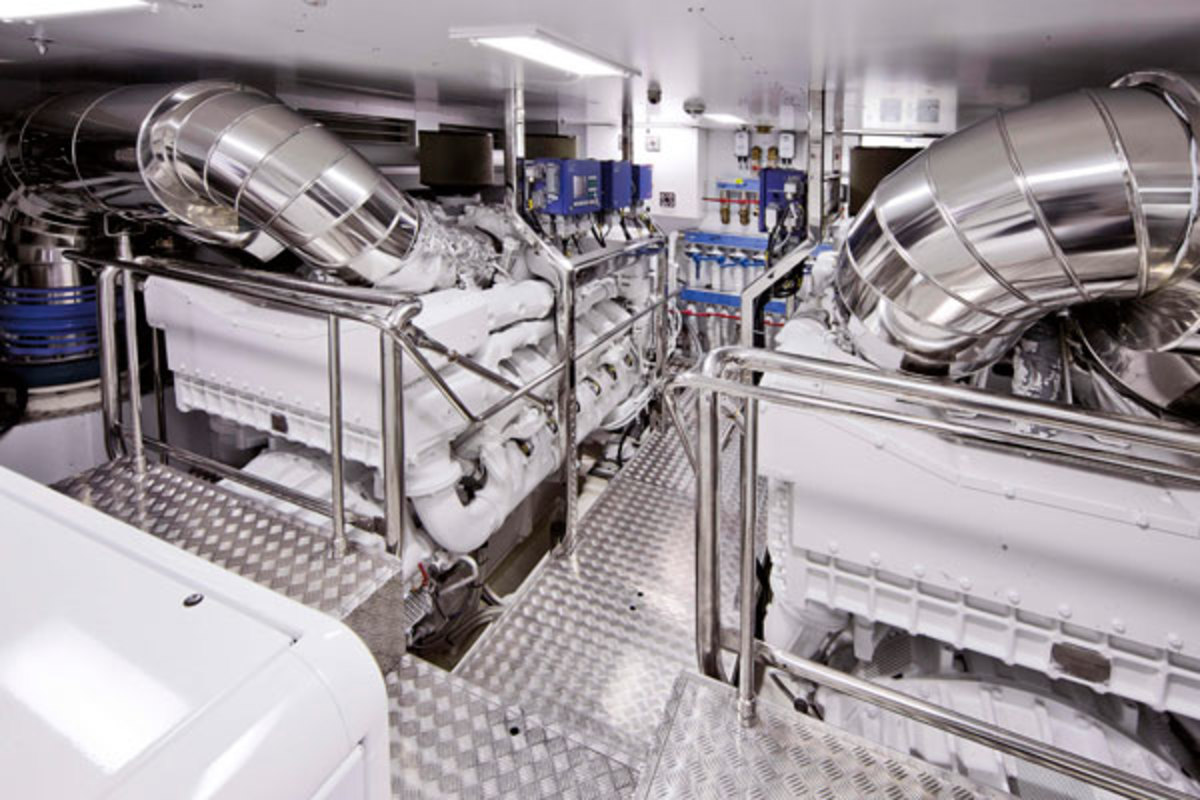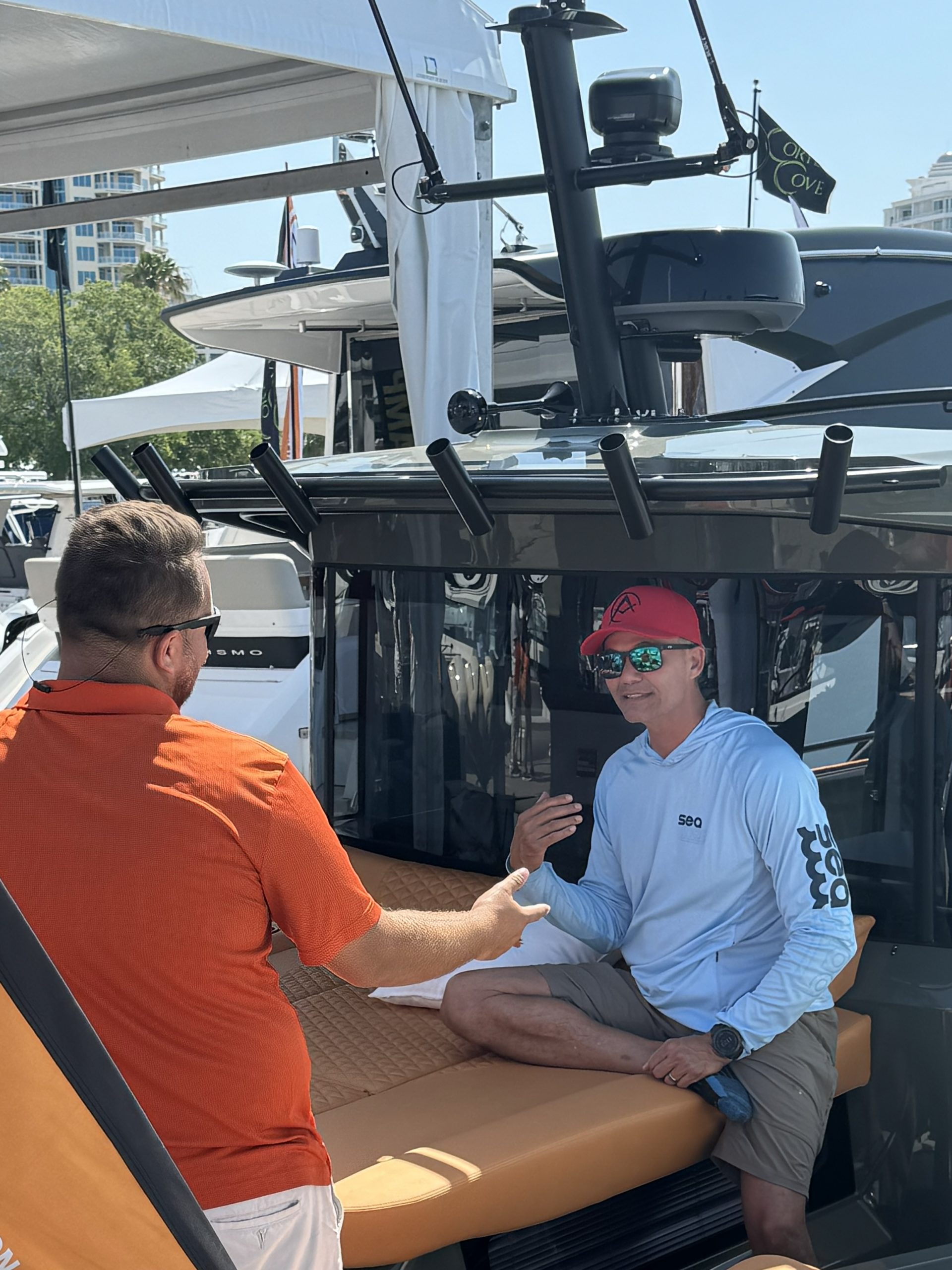Bow of a Boat: Essential Guide to Understanding Its Importance
The bow of a boat refers to the forward part of a vessel's hull, playing a critical role in its overall design and function. As the point that is typically most forward when a boat is in motion, the bow has evolved over time to meet the specific needs of various boat types and navigational requirements. Understanding the anatomy, types, and importance of the bow in boat construction can help boat enthusiasts and professionals alike appreciate the essential role it plays in naval architecture and the boating experience.

Different types of bows are designed to accommodate the unique needs of various boats, ranging from sailing vessels and powerboats to larger ships. The shape and design of a boat's bow can significantly impact its functionality, including its maneuverability, stability, and hydrodynamics. With a rich history in nautical culture, the bow remains a key design element that influences both the performance and aesthetics of boats today.

Key Takeaways
- The bow is the forward part of a boat's hull, impacting its design and functionality.
- Various types of bows serve different purposes depending on a boat's specific navigational needs.
- The shape of a bow influences the overall performance, maneuverability, and the experience of boat navigation.
Understanding Boat Terminology
When it comes to boating, it's essential to understand the basic terminology related to boat parts and directions. Navigating a vessel, whether it's a large ship or a small recreational boat, requires knowledge of these terms to communicate effectively and ensure safety out on the water.
The front of a boat is called the bow, while the back is referred to as the stern. The left side of the boat is the port side, and the right side is the starboard side. These terms are used to identify the sides of the boat relative to the direction in which the boat is facing, regardless of one's position on the vessel.
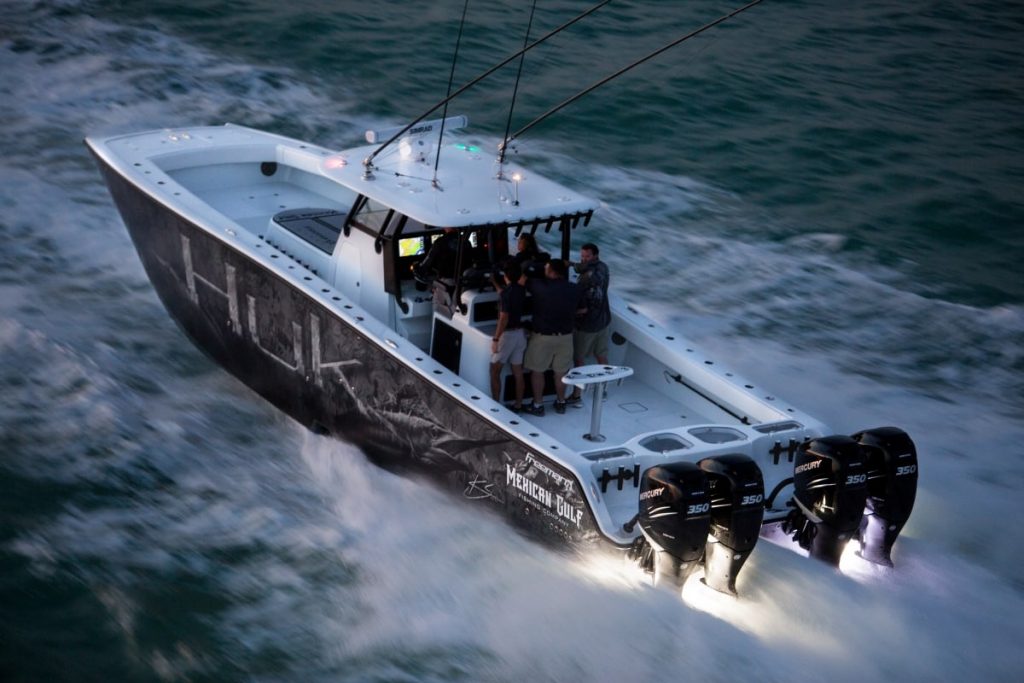
A boat's hull is the main body structure designed to provide buoyancy and displacement needed to support the vessel's overall weight. Key components of the hull include the chine, which is the line where the hull's side and bottom meet, and the stem, the forward-most part of the hull. Other important hull aspects include the draft, the distance between the waterline and the bottom of the hull, and the waterline length, which defines the vessel's length at the water's surface.
The beam of a boat is the width of the vessel at its widest point. This measurement is crucial for stability and overall performance. The rake refers to the angle of the boat's stern or bow in relation to the waterline, affecting factors like speed and fuel efficiency.

Components above the waterline, such as the rail and the prow, help to enhance the vessel's aesthetics and practical attributes. The rail is the protective barrier surrounding the boat's deck, while the prow is the uppermost point of the bow.
Freeboard is the measurement of a boat's hull from the waterline to the upper deck. This dimension is vital when considering a vessel's stability, buoyancy, and safety, especially in rough waters.
In summary, understanding boat terminology is crucial for navigating and operating a vessel effectively. Familiarizing oneself with essential terms like bow, stern, port, starboard, hull, chine, rail, freeboard, and draft will enable better communication and safer experiences on the water.
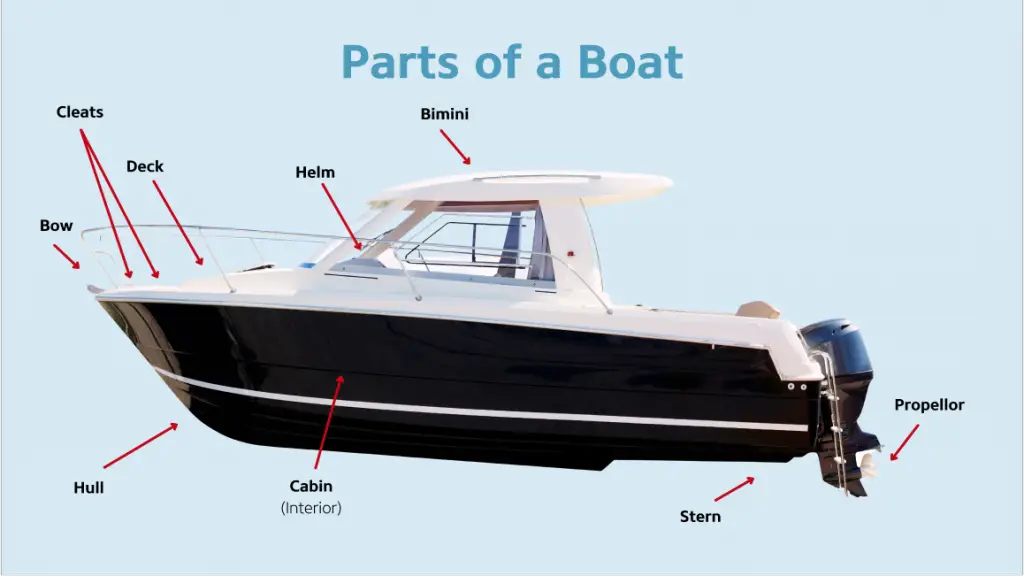
Bow Anatomy and Types
Bow Design and its Variations
The bow of a boat plays an essential role in its performance on the water. There are several types of bow designs that have evolved over time to improve a boat's resistance to drag, speed, and overall stability. Some of the most common bow types include the plumb bow, raked bow, spoon bow, and bulbous bow.
- Plumb bow: This traditional bow design features a vertical front face, which helps in reducing resistance when cutting through the water.
- Raked bow: Characterized by a forward-leaning angle, the raked bow reduces excess water flow over the deck and provides a smoother ride in rough conditions.
- Spoon bow: With a more rounded shape, a spoon bow offers lower resistance and improved comfort, making it ideal for yachts and recreational boats.
- Bulbous bow: This contemporary design, which includes an underwater bulb at the front, minimizes wave-making resistance and enhances fuel efficiency for larger vessels, like cargo ships and cruise liners.

Special Bows
In addition to the common bow types, there are also specialized designs that cater to specific performance requirements. Some of these notable bows are:
- Inverted bow: Also known as a wave-piercing bow, this design reduces pitching and slamming in rough seas, providing a more comfortable experience for passengers.
- Axe bow: With its straight or slightly curved stem, the axe bow minimizes resistance, allowing the craft to achieve higher speeds.
- Parabolic and cylindrical bows: These designs, although less common, can offer unique hydrodynamic characteristics that help in reducing drag and improving performance.

Historic and Modern Bows
The evolution of boat bows has its roots in both historic and modern designs. Techniques used in creating bows have continually been refined over time to ensure optimal performance. Historic bows, like the clipper bow, were known for their speed and ability to slice through the waves. In contrast, modern bows focus on improving the vessel's efficiency and comfort levels.
- Clipper bow: Popularized in the 19th century and used in sailing ships, the clipper bow is known for its narrow v-shaped entry and raked, graceful lines.
- Delta, normal, and reverse bows: These diverse bow forms offer various performance advantages, depending on their application and use in different types of watercraft.
As advances in technology, materials, and design continue, the development of new bow types will continue to enhance the performance and capabilities of boats and ships alike.
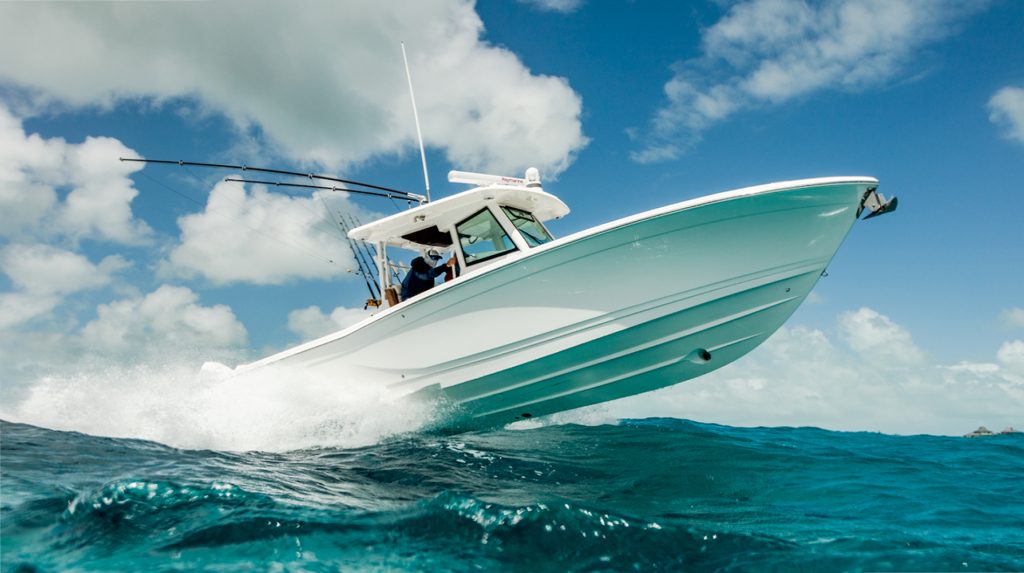
Bow and the Boat's Functionality
Impact on Stability and Speed
The bow of a boat plays a crucial role in its functionality, particularly in terms of stability and speed. It is the forward part of a boat's hull, designed to effectively enable the boat to pass through the water, reducing resistance components such as wave making resistance and wave breaking resistance. By intersecting the water efficiently, the bow significantly contributes to a boat's overall performance.
The shape of the bow also has a direct impact on the speed of the boat. Boats with a well-designed bow can achieve a higher hull speed, which is the maximum speed a boat can travel without generating excessive waves. Additionally, certain bow types can generate lift, helping the boat plane and further enhancing its speed and fuel economy.
Bow's Effect on Floating and Sailing
A boat's bow has a significant impact on its ability to float and sail effectively. The bow's design determines the way it interacts with oncoming waves, helping to maintain a boat's stability, especially by reducing its pitching motion. A carefully crafted bow can minimize the boat's resistance to waves, resulting in smoother sailing and increased fuel economy.
On the other hand, a poorly designed bow can negatively affect the boat's ability to float and sail properly. In some cases, the bow may generate excessive wave resistance, making it difficult for the boat to maintain its course and speed. Ultimately, the efficiency of a boat's bow is crucial to both the vessel's overall performance and the comfort of its passengers.
To summarize, the bow of a boat plays a significant role in the vessel's functionality, particularly in terms of stability, speed, and sailing proficiency. A well-designed bow can improve a boat's performance while ensuring a smooth and comfortable experience for its passengers.

The Bow's Role in Boat Construction
The bow plays a crucial role in the functionality and performance of a boat. As the forward part of the vessel's hull, it interacts with incoming waves and helps reduce resistance, ensuring efficient movement through the water. The design and construction of the bow are thus significant aspects of boat construction.
Bow Material Choices
When it comes to selecting materials for the construction of a bow, builders have several options, each with its own unique properties and advantages. Some common materials include:
- Steel: Known for its strength and durability, steel is often used in the construction of larger vessels and commercial ships. It can withstand harsh marine environments and offers robust support for bows that face demanding conditions.
- Fiberglass: Ideal for recreational boats and smaller vessels, fiberglass is lightweight, water-resistant, and relatively easy to maintain. It lends itself well to the construction of smooth, streamlined bows that minimize resistance while moving through the water.
Bow Construction Techniques
Several bow construction techniques exist, and the choice of one depends on the type, size, and intended use of the boat. Some common bow designs include:
- Bulbous bows: Featuring a bulb-shaped protrusion at the waterline, these bows are designed to improve hydrodynamic performance, minimize resistance, and increase fuel efficiency. They can be seen on larger vessels like container ships and cruise liners.
- Axe bows: Characterized by a sharp and vertical bow design, axe bows aim to reduce drag and improve the boat's stability in rough sea conditions. They are commonly used in naval and offshore patrol vessels.
- Parabolic bows: These bows have a curved profile that offers reduced wave resistance and promotes smoother movement through the water. They are often seen on high-performance powerboats and sailing yachts.
- Cylindrical bows: Designed with a cylindrical shape for a robust hydrodynamic performance, this type of bow provides improved buoyancy and reduced pitching motions. It is commonly found in offshore vessels and workboats.
- Flared bows: Featuring an outward flare above the waterline, flared bows help direct spray away from the boat and improve its handling characteristics. They are commonly seen on sport fishing boats and other small to medium-sized vessels.
In conclusion, understanding the role of the bow in boat construction, material choices, and various construction techniques is essential for designing a boat that performs well and meets its intended purpose. Boat builders must carefully consider the interaction between the bow and the water, as well as the overall performance and aesthetics of the vessel.

Bow Impact on Crew's Experience
The design of a boat's bow plays a significant role in shaping the crew's experience while navigating in various sea conditions. A well-designed bow not only contributes to the vessel's structural stability but also affects the comfort and safety of the crew on board.
One of the key factors determining crew comfort is the incidence of green water and spray on the deck. Green water refers to solid water that breaches the vessel's bow, while spray consists of airborne droplets. The impact of bow flare slamming and pressure peaks may result in green water and spray, potentially affecting the accommodation areas near the bow and leading to wet and slippery decks. This could directly impact the crew's safety and working conditions.
Furthermore, the shape and design of the boat's bow have a direct influence on the vessel's behavior in different seas. A well-designed bow provides a smooth ride in rough seas, reducing the likelihood of vertical accelerations that cause discomfort. In contrast, a poorly designed bow may struggle to effectively cut through waves, leading to increased pitch motions and a less comfortable ride.
In addition to comfort, the bow design has implications for crew safety while transiting inlets, as illustrated by an incident at Haulover Inlet. Ensuring crew safety in such situations requires careful consideration of the vessel's bow design, taking into account possible impacts during high-speed navigation or challenging sea conditions.
Lastly, the bow's structural features can directly impact the crew's accommodation. A well-insulated and robust bow structure will offer more protection to cabins located near the bow, ensuring better noise insulation and preventing water ingress from green water and spray.
In conclusion, the design and features of a boat's bow can significantly impact crew experience by affecting comfort and safety. A well-designed bow enables smooth navigation, provides better accommodation, and ensures the crew's safety in various sea conditions.
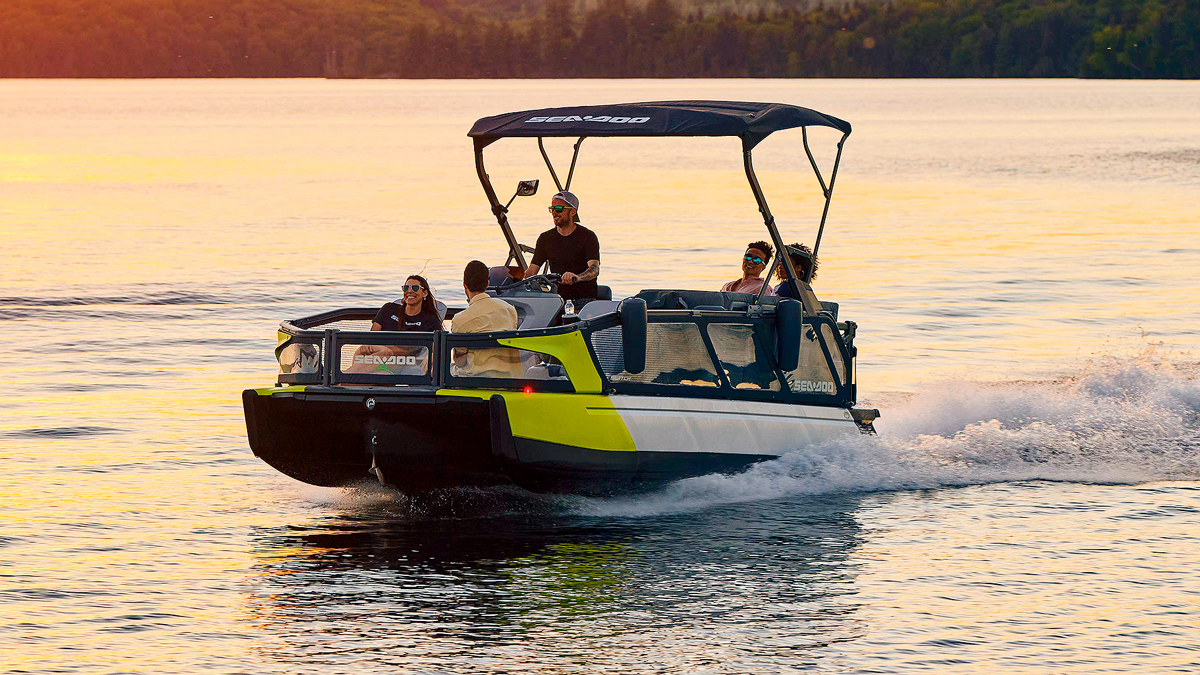
Different Bows for Different Boats
Various types of boats and ships necessitate diverse bow designs to fulfill their distinct purposes and challenges. The bow is the front part of a boat or ship that encounters water first, considerably affecting the watercraft's overall performance, efficiency, and maneuverability.
Fishing boats often emphasize stability and capability to withstand diverse weather and sea conditions, requiring a bow that can reduce water resistance. The raked bow is a favorable choice for these boats, as it offers good seaworthiness and keeps the vessel steady while lowering fuel consumption.
Powerboats frequently incorporate bulbous or wave-piercer bows to minimize resistance and maintain better control at high speeds. The bulbous bow is specifically designed to reduce drag below the waterline, while the wave-piercer bow cuts through waves, minimizing the upward and downward motion of the boat.
Sailing boats, particularly racing or high-performance yachts, may feature axe or inverted bows which are known to improve vessel speed. The axe bow is designed with a sharp, narrow entry to slice through water, reducing drag and increasing efficiency. The inverted bow, also known as a reverse bow, slopes backward to achieve a more streamlined shape. This sleek design allows sailing boats to cut through waves with minimal resistance and maximizes speed.
Cargo vessels and tankers are primarily focused on optimizing their cargo capacity and fuel efficiency. Bulbous bows are popular in these ships because they help to reduce fuel consumption and increase stability. The bulb-like protrusion at the waterline breaks the water into a wave, which reduces the vessel's overall drag.
Motor yachts, often designed for luxury and comfort, usually opt for spoon or flared bows. Spoon bows have a rounded shape that allows smooth water flow, reducing spray and providing a comfortable ride. Flared bows extend outward and upward, providing extra buoyancy and preventing water from splashing onto the deck, ensuring a pleasant and dry on-board experience.
In conclusion, the selection of bow design plays a crucial role in the performance, efficiency, and comfort of various types of watercraft. The choice ultimately depends on the intended use, speed, and desired seaworthiness of the vessel.
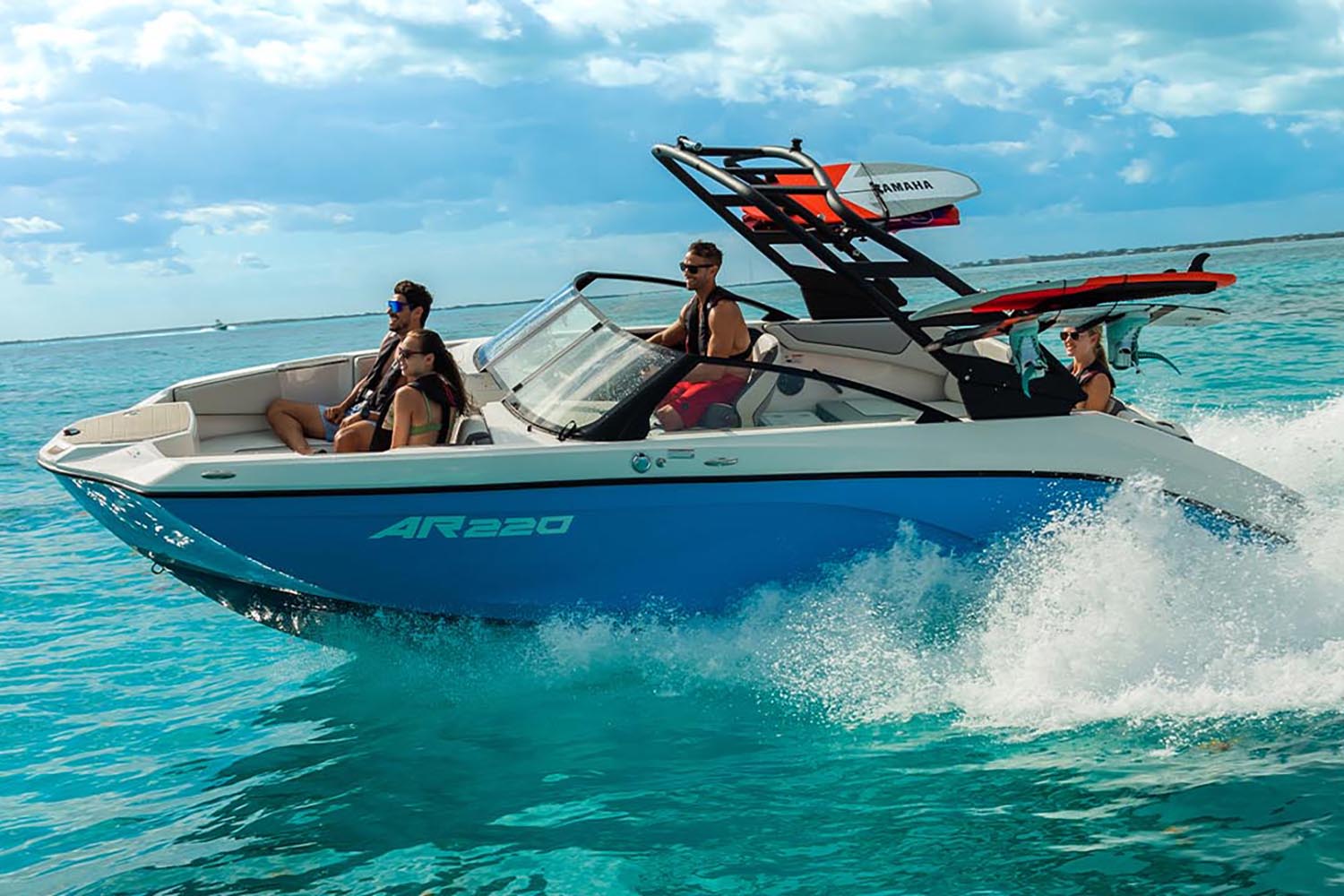
Bow's Role in Steering and Navigation
The bow, located at the front of a boat, plays a vital role in the steering and navigation of the vessel. Its design and shape significantly influence the efficiency with which the boat moves through the water. In many boats, the bow is accountable for helping the boat achieve directional stability, as well as maneuverability in various waterway conditions.
An essential element in the bow's role in steering and navigation is its relationship with the rudder system. Typically located at the stern or the rear end of a boat, the rudder serves as a primary steering mechanism. Rudder motions cause the boat to turn, while the bow shape and hydrodynamic forces maintain the course. In earlier times, boats relied on a steering oar, which fulfilled a similar role as the contemporary rudder.
Additionally, the bow contributes to a boat's ability to navigate tight spaces and dock in various circumstances. The tiller, a lever attached to the rudder, plays a significant part in this regard. When using the tiller properly, the boat can steer at different angles and approach docks or other vessels with ease.
To successfully navigate through a waterway, the boat's bow design needs to consider factors such as water disturbance, friction, and resistance. In this context, the bow's shape allows a vessel to slice through water efficiently, reducing water resistance and improving steering capabilities.
Overall, the bow serves a crucial role in steering and navigation. Its design, working in conjunction with the rudder, tiller, and boat's overall hydrodynamics, grants a vessel the ability to traverse waterways, dock with precision, and maintain course with confidence and ease.

Naval Architecture and Bow Design
Naval architecture is a specialized field of engineering that deals with the design and construction of ships. One of the critical aspects a naval architect must consider in ship design is the bow. The bow of a ship affects its hydrodynamic performance, including movement through water and overall resistance to motion. Several special bows have been developed over time, each offering distinct advantages in certain situations.
One common bow design found in various ships is the plumb bow. A plumb bow is a vertical, straight-edged bow that has maximum waterline length. This design allows for greater hull speed and helps achieve better hydrodynamic efficiency.
The raked bow, on the other hand, slopes towards the rear of the ship, providing a streamlined shape that reduces resistance when moving through water. Clipper bows, which are characterized by a sharp curvature, are optimized for speed and have been used in traditional sailing ships for centuries.
In contrast, the bulbous bow is designed to optimize the hydrodynamic parameters of large vessels, such as container ships and cruise liners. It reduces drag by redistributing water around the hull to create a smoother flow. This innovation not only enhances the ship's performance but also improves its fuel efficiency.
Another innovation in ship design is the inverted bow, also known as the X-bow. This type of bow slopes forward rather than backward, resulting in a longer waterline, increased payload capacity, and improved seakeeping.
When designing a ship, naval architects take into consideration various hydrodynamic parameters, such as drag, lift, and stability. These factors are influenced by the shape and curvature of the bow. By carefully selecting the appropriate bow design for specific ship types, they can achieve a balance between performance, efficiency, and safety.
In summary, naval architects play a crucial role in ship design, particularly in the development and application of advanced bow designs. Understanding the relationship between bow curvature and hydrodynamic parameters allows ship designers to create vessels that are efficient, effective, and safe for a wide range of maritime applications.
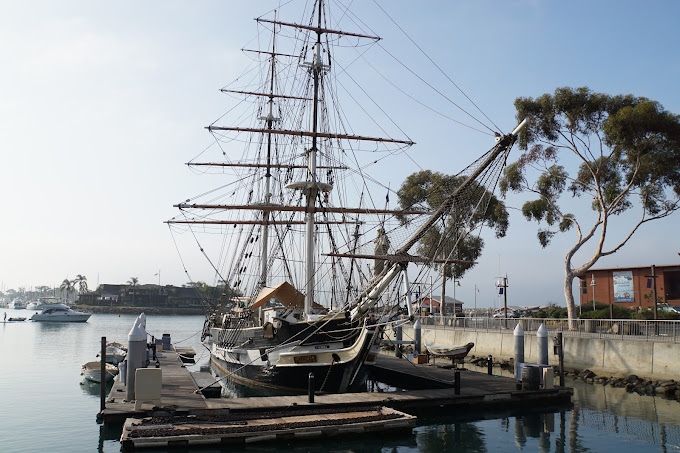
Bow in Nautical History and Culture
The bow, the front part of a boat or ship, has a long and storied history in nautical culture. The origin of the term "bow" can be traced back to the Old Norse word 'bógr', which meant 'shoulder' and referred to the forward, curved portion of a ship that resembled a human shoulder. This was an important part of ship design, as it allowed ships to cut through the water efficiently, minimizing resistance.
In French, the term 'proue' is used for the bow. This word, like its English counterpart, has its roots in ancient languages, deriving from the Latin word 'prora'. The bow has been a significant part of ship design and culture across different civilizations, showcasing varying interpretations of efficiency and aesthetics.
Different types of bows have emerged over the years, each suited to the needs and constraints of their respective eras. One such type, the straight-stem bow, was a common feature of early sailing ships. This design allowed the ships to move through the water with ease, maximizing stability and reducing drag.
In more recent history, the introduction of motor-powered vessels led to the development of new bow designs, such as the bulbous bow. The bulbous bow is characterized by a rounded protrusion at the waterline that projects forward from the ship's main bow. This innovative design reduces the wave-making resistance of the ship, resulting in improved speed and fuel efficiency.
Throughout the ages, the cultural significance of the bow has remained steadfast. In many maritime traditions, it is customary to adorn the bow of a ship with a figurehead, a carved representation of a deity or mythical creature, as a symbol of protection and guidance. Figureheads were especially prominent during the Age of Sail, serving as both talismans and expressions of a ship's identity.
In conclusion, the bow has played a pivotal role in the development and culture of maritime societies across the world. As shipbuilding technology has evolved over the centuries, so too have the designs of ship bows, each reflecting the needs and values of the people who created them.
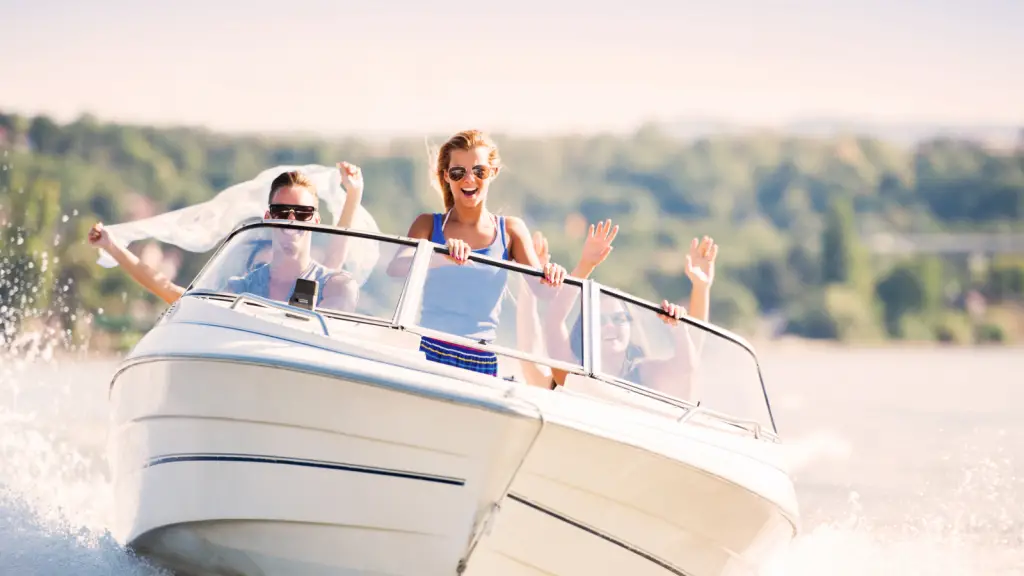
Choosing the Right Bow
When looking for a boat, it is essential to consider the type of bow that will best suit your needs, as it greatly impacts the boat's performance and overall capabilities. There are several types of bows, including pointed and round bows, each with its own characteristics and advantages.
Pointed bows have a more efficient design in terms of creating lift and are generally faster. However, they may not be as stable as their round counterparts, potentially leading to difficulties in control. On the other hand, round bows offer more stability, making them a solid choice for those prioritizing safety and ease of maneuvering over speed. Both designs have their merits, and your choice should depend on your specific needs and preferences.
In recent years, the x-bow design has emerged as an innovative bow type that addresses concerns such as rough seas and energy efficiency. This design typically features a horizontal, reverse-facing bow, allowing for smoother rides and increased fuel efficiency. When assessing bow options, it's important to consider the direction and specifications that align with your intended use of the boat.
Beyond traditional bow designs, there is a vast array of custom variations and unique shapes that cater to specific needs. Your choice should account for factors such as wind and water conditions, the boat's intended purpose, and the desired level of maneuverability. Furthermore, carefully evaluating the boat's specifications, such as its superstructure and engine power, will ensure that the chosen bow type complements your boat's overall performance.
In summary, selecting an appropriate bow type is a crucial aspect of boat shopping. By considering factors such as the general types of bows (pointed, round, and x-bow), specific design and direction, specifications, and overall compatibility with your boat's performance, you are better equipped to make an informed decision that caters to your unique needs and preferences.
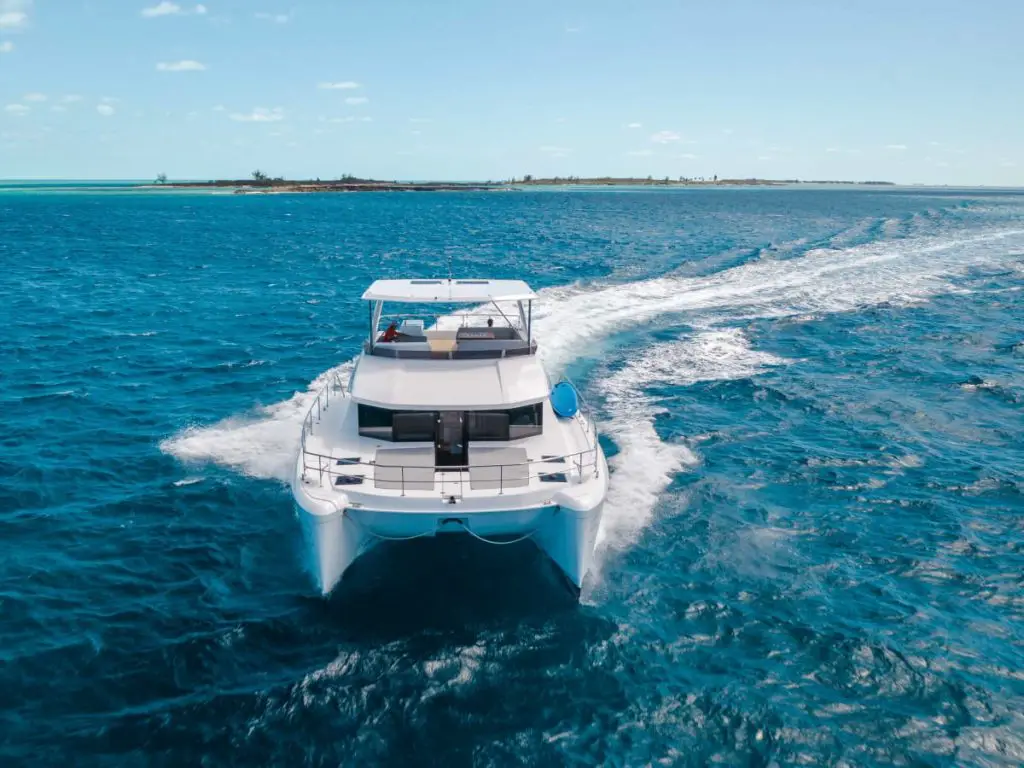
Frequently Asked Questions
What is the purpose of the bow on a boat?
The bow of a boat is the frontmost part of the vessel, playing a crucial role in its performance, handling, and overall aesthetics. It influences the way a boat interacts with water, ensuring smooth navigation and stability. The bow also plays a significant part in determining the boat's overall speed and maneuverability.
How does the shape of the bow affect a boat's performance?
The shape of the bow impacts many aspects of a boat's performance, including its speed, handling, and the ability to cut through waves. A well-designed bow provides lift, reduces drag, and ensures a smooth ride in various water conditions. Additionally, the bow's shape is essential for the vessel's efficiency. For instance, a sharp bow can effectively cut through water, whereas a rounded bow helps displace water, preventing excessive spray.
What materials are commonly used to construct the bow?
Various materials can be used to construct the bow of a boat, including wood, fiberglass, aluminum, and steel. Wood is a traditional choice for building the bow, offering a classic aesthetic and warmth. Fiberglass is a popular modern material known for its lightweight and smooth finish, while aluminum and steel are typically used for constructing robust, durable bows in larger vessels and commercial boats.
What are the different types of bow designs?
There are several types of bow designs, each with their advantages and intended uses. Some common bow designs include the traditional V-shaped bow, which is excellent for cutting through waves and providing a smooth ride in choppy conditions. The U-shaped bow, with its rounded bottom, is suitable for displacement hulls and offers increased buoyancy and stability. Another bow design is the X-bow, known for reducing resistance and providing excellent fuel efficiency while maintaining a high level of stability.
How do boat manufacturers choose a bow design?
Boat manufacturers consider various factors when choosing a bow design for a specific model. They take into account the intended use, desired performance attributes, and aesthetic preferences. Manufacturers analyze factors such as speed, handling, fuel efficiency, and passenger comfort when selecting a suitable bow design. Additionally, they may experiment with innovative designs and materials to improve on existing designs and meet the demands of modern-day boating.
In nautical terms, what is the opposite of the bow?
In nautical terms, the opposite of the bow is the stern. The stern is the rear part of a boat, providing the mounting point for the vessel's propulsion system or outboard motor. Similar to the bow, the design of the stern significantly impacts the overall performance, stability, and aesthetics of the boat.
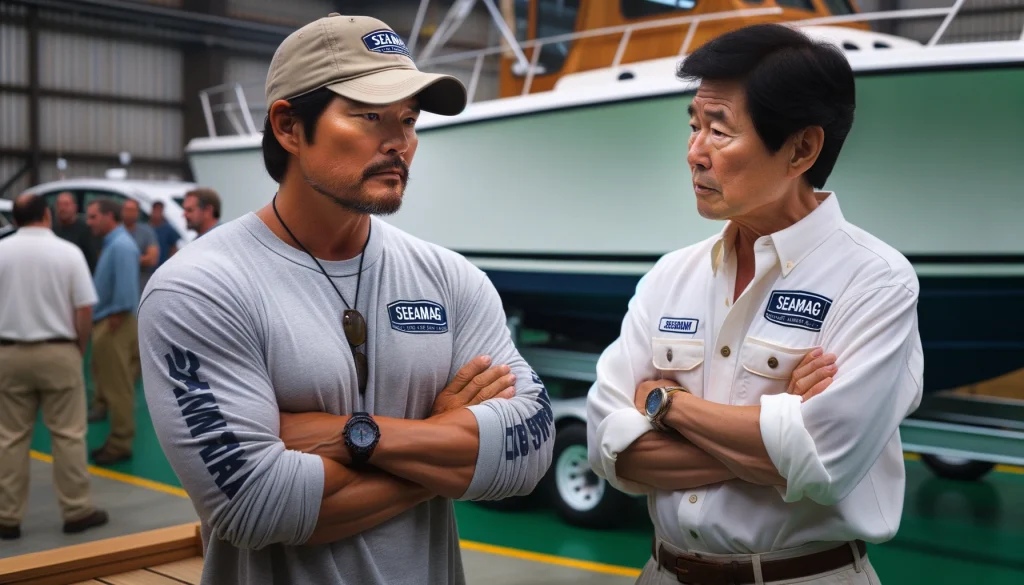
Q&A With Boating Design Firm
Charlie (Sea Magazine): Hello, dear readers. I'm Charlie from Sea Magazine, and today, I'm joined by Alex, a senior designer at Fluid Dynamics, a renowned boat design firm. We're here to discuss bow designs of boats and its significance. Welcome, Alex.
Alex (Fluid Dynamics): Thank you, Charlie. It's great to be here to chat about something so central to boat design.
Charlie: Let's start at the beginning. When we talk about the 'boat hull,' what exactly are we referring to?
Alex: The boat hull is essentially the main body of the boat. It's the portion that sits in the water and dictates how the boat sits, moves, and interacts with water.
Charlie: So, as the boat moves boat forward, how critical is the role of bow shapes in this process?
Alex: Bow shapes play an instrumental role. Different bow shapes determine how a boat interacts with waves and water. It affects how water flows around the boat, influencing speed, stability, and fuel efficiency. When you look at a boat called, let's say, "The Ocean Whisperer," its bow design might be entirely different from another boat, purely because of its intended use.
Charlie: That's interesting. Talking about the parts of a boat, how does the steering wheel tie in with the design of the bow?
Alex: While the steering wheel doesn't directly interact with the bow, its placement and design have to account for how the boat sits due to the bow's shape. For instance, if the bow's design causes the boat to ride high, the steering wheel's position might be adjusted so the captain has a clear view ahead.
Charlie: On many ships and even most boats, we often see a swim platform. Could you explain its placement in relation to the bow?
Alex: Certainly. The swim platform is typically at the back, or stern, of the boat. While it doesn't directly relate to the bow, the boat's overall design, from bow to stern, needs to be harmonious. If the bow is designed to elevate the boat's forward section, the upper deck level might be raised, impacting where the swim platform sits in relation to the water.
Charlie: That makes sense. I've also noticed that on the left-hand side of many boats, there's a red light. Can you shed some light on this?
Alex: Ah, yes! That red light is one of the navigation lights. On the left-hand side or port side, you have the red light, and on the right-hand side or starboard, you'll see a green light. It's a nautical term and tradition that helps other vessels determine which direction a boat is heading in low visibility or nighttime conditions.
Charlie: Speaking of design features, why is room inside a vessel such a focal point when considering the bow's shape?
Alex: A well-designed bow not only impacts the boat's external performance but can also dictate the room inside the boat. A bow with a broader cross-section might provide more interior space. It's all about finding a balance between performance and comfort.
Charlie: Before we wrap up, one last question: How does the given length of a boat impact the bow design?
Alex: The given length determines how much weight and volume the boat can carry. Larger boats might have a deeper draft, meaning they sit lower in the water. This can influence the bow's shape as the lowest point needs to account for stability and wave interaction.
Charlie: Alex, thank you so much for this insightful discussion. I'm sure our readers at Sea Magazine now have a clearer understanding of the intricacies of bow design.
Alex: It was my pleasure, Charlie. Always happy to share knowledge about boat design with passionate enthusiasts.
Charlie is Editor-in-Chief of Sea Magazine
